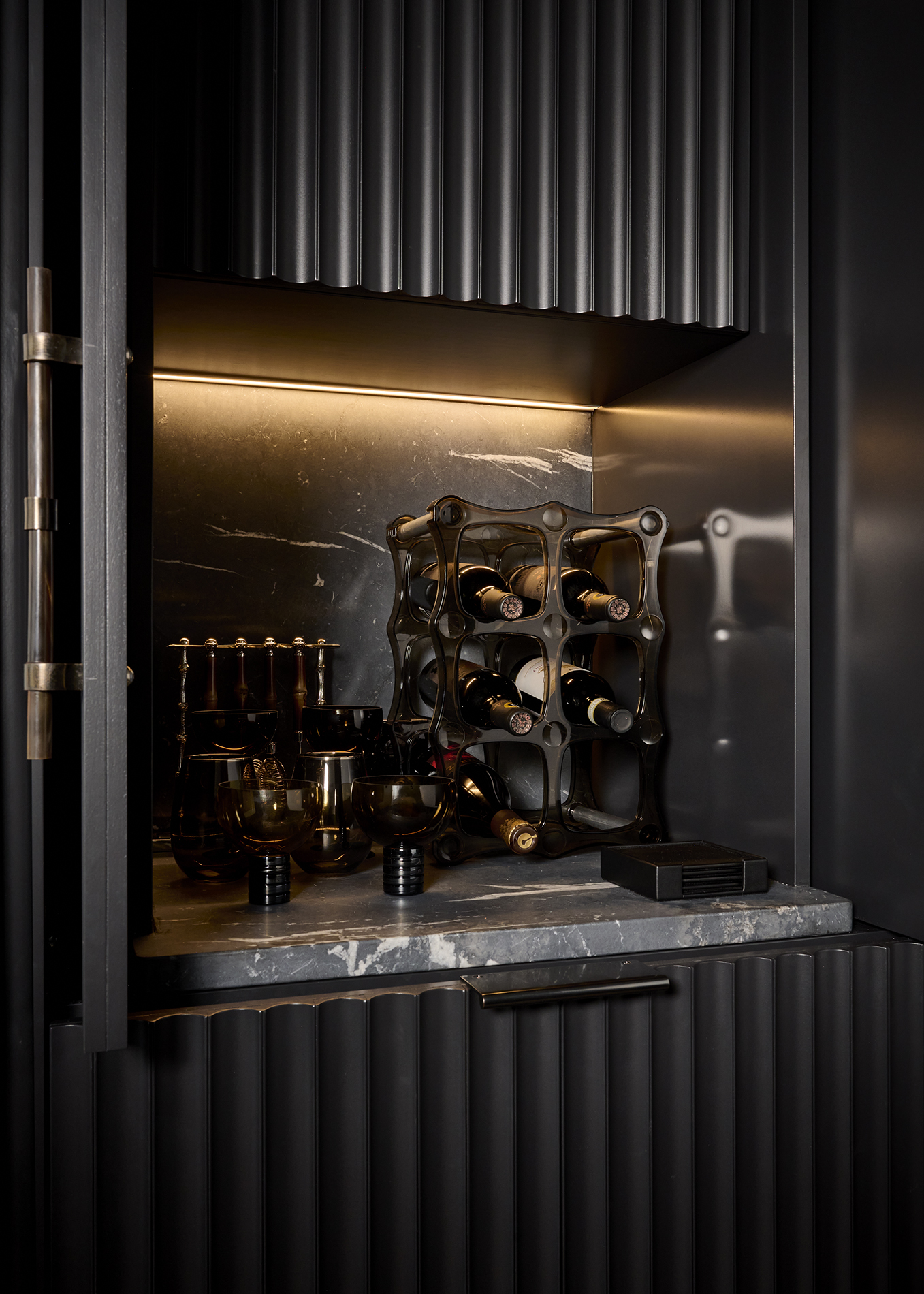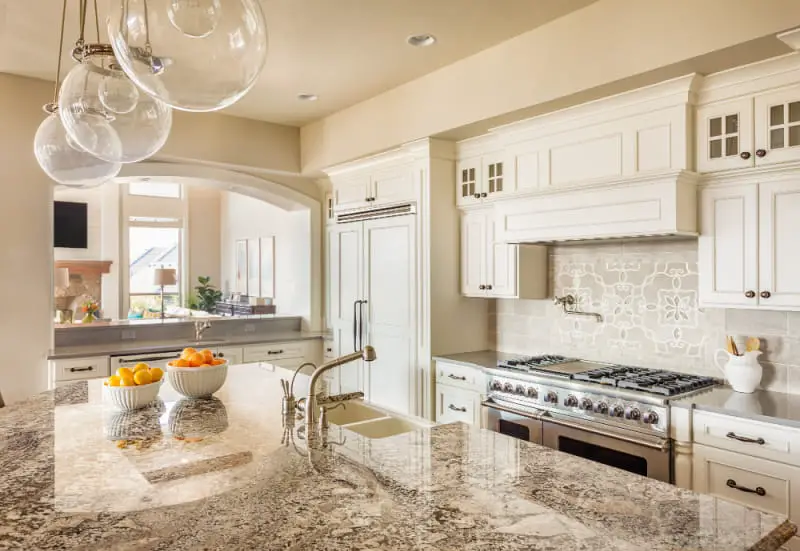Granite Countertop Sealing can help you Sleep at Night (Info, Tips & Tools)
When it comes to granite countertop sealers, the topic is surrounded by a surprising amount of controversy and confusion. Homeowners often find themselves unsure whether sealing is truly necessary, how sealers function, or even which products to trust.
Adding to the uncertainty, many fabricators and installers—professionals you’d expect to be experts—often lack a full understanding of how sealers work or when a granite countertop actually needs sealing.
This knowledge gap can lead to mixed advice and costly mistakes for homeowners trying to protect their investment. In this blog post, we’ll clear up the myths, tackle the confusion, and arm you with everything you need to know about granite sealers and the sealing process.
Whether you're sealing your granite countertops for the first time or trying to decide if resealing is necessary, this comprehensive guide will provide the clarity you’ve been looking for.
 Photo Credit: Marc Mauldin
Photo Credit: Marc MauldinHow to Know if Your Granite Needs Sealing
Wondering whether your granite countertop needs sealing? It’s a common question with a simple solution: a water test with a timer. This quick and easy method will reveal whether sealing your countertop is necessary and help maintain its beauty and durability.
The Water Test for Granite Sealing
- Pour a small puddle of water onto the granite surface.
- Start a timer or note the time.
- Observe how long it takes for the area under the water to darken or stain.
If the granite darkens within 10 minutes or less, it likely needs sealing. However, the exact time will give you more specific information about the granite’s porosity.
Performing this test before and after sealing will help you determine the effectiveness of the sealant. For more details on interpreting results, refer to our in-depth guide on the granite water test.
How to Choose the Right Product?
When selecting a product for granite countertop sealing, pay attention to these factors:
- Porosity of your granite: Not all granite is equally porous. Perform a simple water test (pour a small puddle of water and see how long it takes to absorb) to determine how much protection your countertop needs.
- Longevity: Impregnators last longer and require less maintenance, making them a better investment over time.
- Finish preference: If you want to maintain the natural look of your granite, stick with an impregnator.
- Breathability needs: For areas prone to moisture exposure or condensation, breathability is essential to avoid problems like damp spots or damage.
Impregnator vs. Waterborne Sealer, How do I Choose?
A waterborne sealer is a water-repellent treatment that forms a protective film on the surface of the material. Think of it as wrapping your granite countertop in a thin, waterproof layer. This film blocks water from seeping into the stone, which sounds great at first. But there is more to know.
While granite waterborne sealers effectively prevent water absorption, they also block breathability. This means that water vapor, which naturally moves through stone pores, gets trapped beneath the surface. Over time, this trapped moisture can cause significant problems. For instance:
- Moisture build-up: If any water finds its way underneath the sealer (through tiny cracks or imperfections), it gets trapped and builds up over time. This pressure can eventually cause the sealer’s film to break, leaving your countertop unprotected.
- Appearance changes: Sealers can create an unnatural sheen on the granite, which might not be ideal if you prefer a natural matte finish.
- Short lifespan: The film created by a sealer is prone to wear and tear. Regular use, cleaning, and exposure to heat can cause it to degrade, meaning you’ll need to reapply frequently.
While stone sealers can work as a quick, short-term solution for small areas, I recommend using them with caution, especially if you’re dealing with porous surfaces like marble.

What Makes an Impregnator Different?

An impregnator is another type of granite sealer, but it works in a completely different way. Instead of forming a surface film, it penetrates deep into the stone and bonds with the material below the stone’s surface.
By lining the pores of the granite rather than sealing them off, an impregnator prevents water from soaking into the stone while still allowing it to breathe. This means water vapor can move freely through the stone, preventing moisture build-up.
Here’s why we prefer impregnators for granite countertop sealing:
- Breathability: Since the material can still "breathe," there’s no risk of trapped moisture causing damage to the stone.
- Durability: Impregnators don’t rely on a film that can wear away. Instead, they chemically bond with the stone, offering long-lasting protection without regular reapplication.
- Natural finish: Unlike sealers, impregnators don’t alter the appearance of the surface. Your granite will maintain its natural beauty without any added sheen.
Think of it this way - a sealer acts like cling film, wrapping the surface, while an impregnator waterproofs the stone from the inside out.
Which One Should You Use for Granite Countertop Sealing?
For granite countertops, we almost always recommend using an impregnator over a sealer. Granite countertops are a porous material that benefits from breathability, and impregnators provide superior long-term protection without the drawbacks of a surface film.
That said, there may be specific situations where a sealer could work, such as on non-porous stones or for temporary waterproofing in areas that won’t experience heavy use. But for most homeowners looking to protect their granite countertops, an impregnator is the better choice.
How to Seal Granite Countertops: A Step-by-Step breakdown
Sealing granite countertops is a simple process that requires attention to a few key steps to ensure the seal is effective and avoids problems like hazy residue.
Step-by-Step Guide:
- Test the granite to confirm if sealing is necessary.
- Clean the countertop thoroughly using acetone o55r a quality granite cleaner to remove debris and residue.
- Apply the sealer by pouring a sufficient amount onto a manageable area of the countertop (not the entire surface at once).
- Spread the sealer evenly using a clean cloth or a paintbrush to create a thin, even film.
- Allow absorption for 2-5 minutes, depending on the specific stone and sealer instructions.
- Reapply if necessary by adding a small amount of sealer and spreading it around for another minute or two to ensure complete coverage.
- Wipe off excess sealer and buff the surface with a clean, dry cloth to prevent residue or haze from forming.
Additional Tips:
- Use enough sealer. Pouring and spreading the sealer is far more effective than spraying or wiping it on.
- Avoid haze. If residue appears, reapply a small amount of sealer to the area and wipe it clean immediately.
- Multiple coats. Light-colored or highly porous granite may need two or three coats. Perform the water test after each coat to determine if additional sealing is required.
See our in-depth step by step guide for a more comprehensive breakdown of sealing your granite countertops.
Conclusion
Sealing granite countertops is a straightforward process that enhances stain resistance and prolongs the stone’s beauty. By testing, choosing the right sealer, and following proper application techniques, you can maintain your granite surfaces with ease. Remember, the water test is your best tool to determine if and when sealing is necessary.


